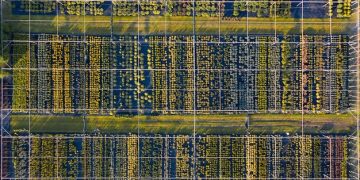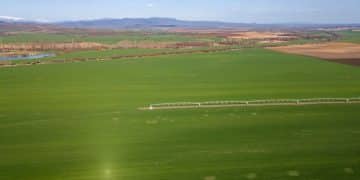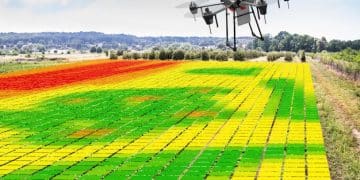Variable rate fertilizer application systems: maximizing yield
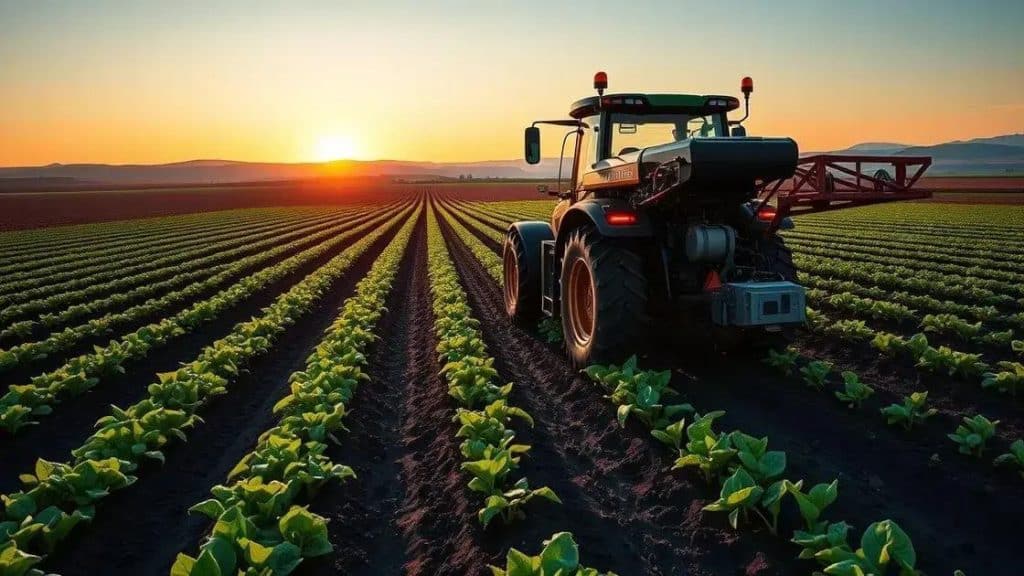
Variable rate fertilizer application systems optimize nutrient use by applying fertilizers at varying rates based on specific field conditions, leading to improved crop yields, cost savings, and reduced environmental impact.
Variable rate fertilizer application systems can transform your farming practices by ensuring that each crop receives the right amount of nutrients. Have you ever wondered how such precision can improve yields? Let’s dive into the details!
Understanding variable rate fertilizer application
Understanding variable rate fertilizer application is essential for modern agriculture. This technology allows farmers to apply fertilizers at varying rates across fields based on specific needs. But how does it work?
The process utilizes data from soil tests and crop requirements to determine the ideal amount of nutrients for each section of a field. This precision not only boosts yields but also conserves resources, ensuring that every ounce of fertilizer counts.
Key Components of Variable Rate Applications
There are several key components that make variable rate fertilizer application effective:
- Soil Maps: High-resolution maps created from soil samples.
- Sensors: Equipment that measures soil nutrients in real-time.
- GPS Technology: Ensures accurate application across the field.
- Data Analysis: Algorithms that interpret soil and crop data to recommend rates.
Farmers can use this technology to assign specific fertilizer amounts based on the crop’s needs at various growth stages. This results in a more balanced application, reducing waste and promoting sustainability.
Benefits of Understanding This System
By grasping the fundamentals of variable rate application, farmers can:
- Maximize Yields: Optimize nutrient delivery to crops.
- Reduce Costs: Decrease fertilizer and labor expenses.
- Minimize Environmental Impact: Lower excess runoff and pollution.
In addition to these benefits, this system also enhances the overall health of the soil. When nutrients are applied accurately, plants thrive better, leading to improved crop resilience and productivity. Farmers who embrace variable rate fertilizer application are not just improving their output; they are contributing to a more sustainable agricultural future.
Benefits of targeted fertilizer distribution

Benefits of targeted fertilizer distribution are essential for modern farming practices. By applying fertilizers more precisely, farmers can see significant improvements in crop health and yield.
One of the main advantages is enhanced nutrient efficiency. Instead of blanket applications, fertilizers are distributed based on the specific needs of the crops. This leads to healthier plants and better use of nutrients, which can improve yields substantially.
Key Advantages of Targeted Fertilizer Distribution
This method not only optimizes resources but also promotes a healthier ecosystem. Here are some key benefits:
- Cost Savings: Reducing the amount of fertilizer needed decreases overall costs for farmers.
- Environmental Protection: Minimizing excess application leads to less runoff and pollution.
- Increased Crop Yields: Crops receive exactly what they need for optimal growth.
- Sustainable Practices: Promotes better soil health and reduces waste.
Farmers implementing targeted fertilizer distribution often witness improved soil conditions over time. By focusing on specific areas that require nutrients, soil degradation can be minimized.
Long-Term Benefits
This approach not only addresses immediate crop needs but also supports long-term agricultural sustainability. Over time, healthier soil results in better water retention and improved biodiversity in the field. These outcomes benefit not only the current farming practices but also future generations.
As the industry moves towards more sustainable methods, understanding the benefits of targeted fertilizer distribution is crucial. Farmers who adopt these practices will likely see enhanced productivity and a positive impact on the environment.
Key technologies driving these systems
Key technologies driving these systems are crucial for the advancement of variable rate fertilizer applications. Understanding these technologies can help farmers adopt more efficient and sustainable practices.
One of the most significant technologies is GPS. This enables precise location tracking of equipment in the field, which is essential for accurate fertilizer application. By knowing exactly where resources are deployed, farmers can optimize their use and avoid waste.
Essential Technologies in Variable Rate Systems
Several technologies contribute to the effectiveness of variable rate fertilizer application systems. Here are some key components:
- Geographic Information Systems (GIS): This technology allows for detailed mapping of fields, helping to analyze variations in soil types and nutrient levels.
- Sensors: Various sensors can measure soil moisture, nutrient concentration, and crop health in real-time, guiding precise application.
- Data Management Software: Platforms that analyze data collected from fields can suggest optimal fertilizer rates based on crop requirements and local conditions.
- Automated Machinery: Advanced tractors and sprayers equipped with variable rate technology can adjust application rates on-the-go, ensuring even coverage.
These technologies work together to create a comprehensive approach to fertilizer management. As a farmer, leveraging these tools can lead to higher efficiency and better crop yields. They also help in reducing environmental impact by minimizing run-off and ensuring that nutrients are utilized effectively.
The Role of Data Analytics
Data analytics is another essential aspect of these systems. By evaluating the information gathered from sensors and GIS, farmers can make informed decisions about their fertilizer practices. This leads to improved planning and resource allocation. Efficient use of data allows for real-time adjustments during application, responding quickly to changing field conditions.
As you explore the key technologies driving these systems, consider how integrating these tools can enhance your farming operation. Adopting such innovations not only benefits your crops but also aligns with sustainable agricultural practices.
Best practices for effective implementation
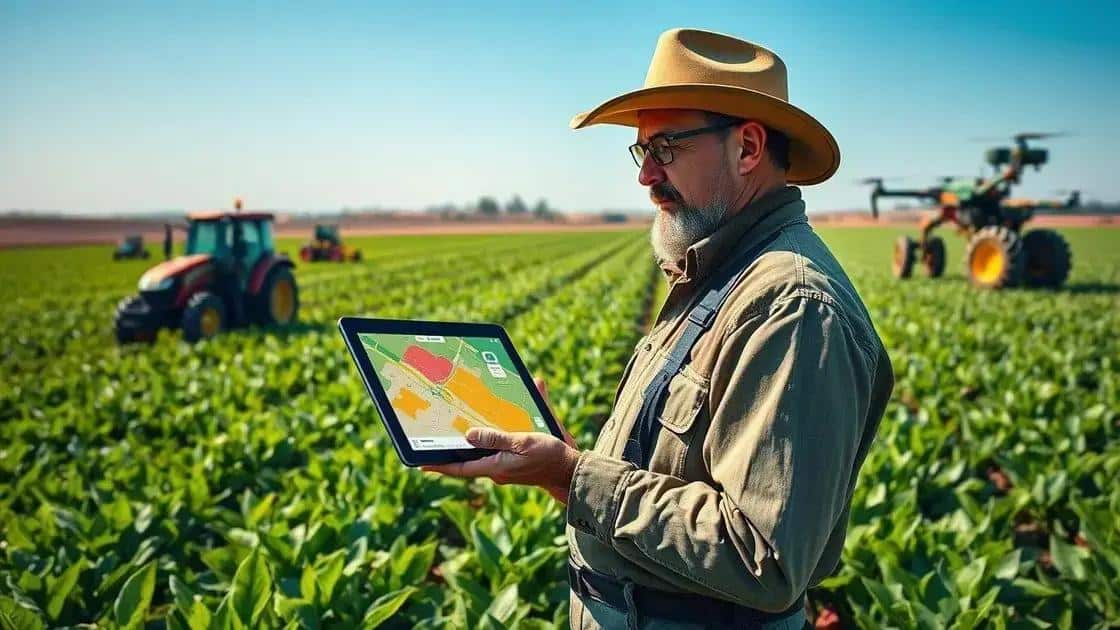
Best practices for effective implementation of variable rate fertilizer application systems can make a significant difference in farming outcomes. Adopting these practices allows farmers to maximize their resources and improve crop yields.
First, it is essential to conduct thorough soil testing. This helps identify nutrient levels and pH, allowing for a customized fertilization plan tailored to specific field conditions. Soil tests provide the data needed to make informed decisions about fertilizer application.
Planning and Data Management
Effective planning involves creating a map of the field highlighting different soil types and nutrient needs. Using Geographic Information Systems (GIS) helps in this mapping process. Once mapped, farmers can reference these details during fertilizer application to ensure accuracy.
- Regular Data Update: Keep records of soil health and crop performance over time.
- Adjust Fertilizer Rates: Based on ongoing observations, modify fertilizer application rates as needed to adapt to changing crop conditions.
- Utilize Technology: Implement advanced sensors to continuously monitor soil and crop health, adjusting applications in real-time.
- Train Personnel: Ensure that staff is well-trained in operating technology and interpreting data effectively.
Another best practice is to start small. Pilot testing the variable rate application on a few acres first helps farmers understand the technology without risking large areas of crop. This method allows for refining techniques and strategies based on real experience.
Maintaining Equipment
Regular maintenance of equipment is critical for success. Ensuring that spraying and spreading machinery is calibrated correctly contributes to effective, uniform application. It is essential to schedule periodic checks to prevent errors that can lead to over- or under-fertilization.
Engaging with agronomists or agricultural consultants can further enhance the implementation of these systems. Their expertise can guide farmers in interpreting data results and optimizing their fertilization strategies. By emphasizing continuous education and adapting to emerging technologies, farmers can stay at the forefront of agricultural advancements.
Understanding and integrating these best practices for effective implementation can significantly enhance the viability and productivity of farming operations.
FAQ – Frequently Asked Questions about Variable Rate Fertilizer Application Systems
What is variable rate fertilizer application?
Variable rate fertilizer application is a precision farming technique that allows farmers to apply fertilizers at varying rates based on specific field conditions and crop needs.
What are the benefits of using this system?
The benefits include improved crop yields, reduced fertilizer costs, minimized environmental impact, and enhanced soil health.
What technologies are used in variable rate applications?
Technologies include GPS for location tracking, GIS for mapping fields, sensors for soil measurement, and data management software for analysis.
How can I start implementing variable rate fertilizer application?
Begin by conducting soil tests, creating detailed maps of your fields, and piloting the system on a small area before full implementation.

